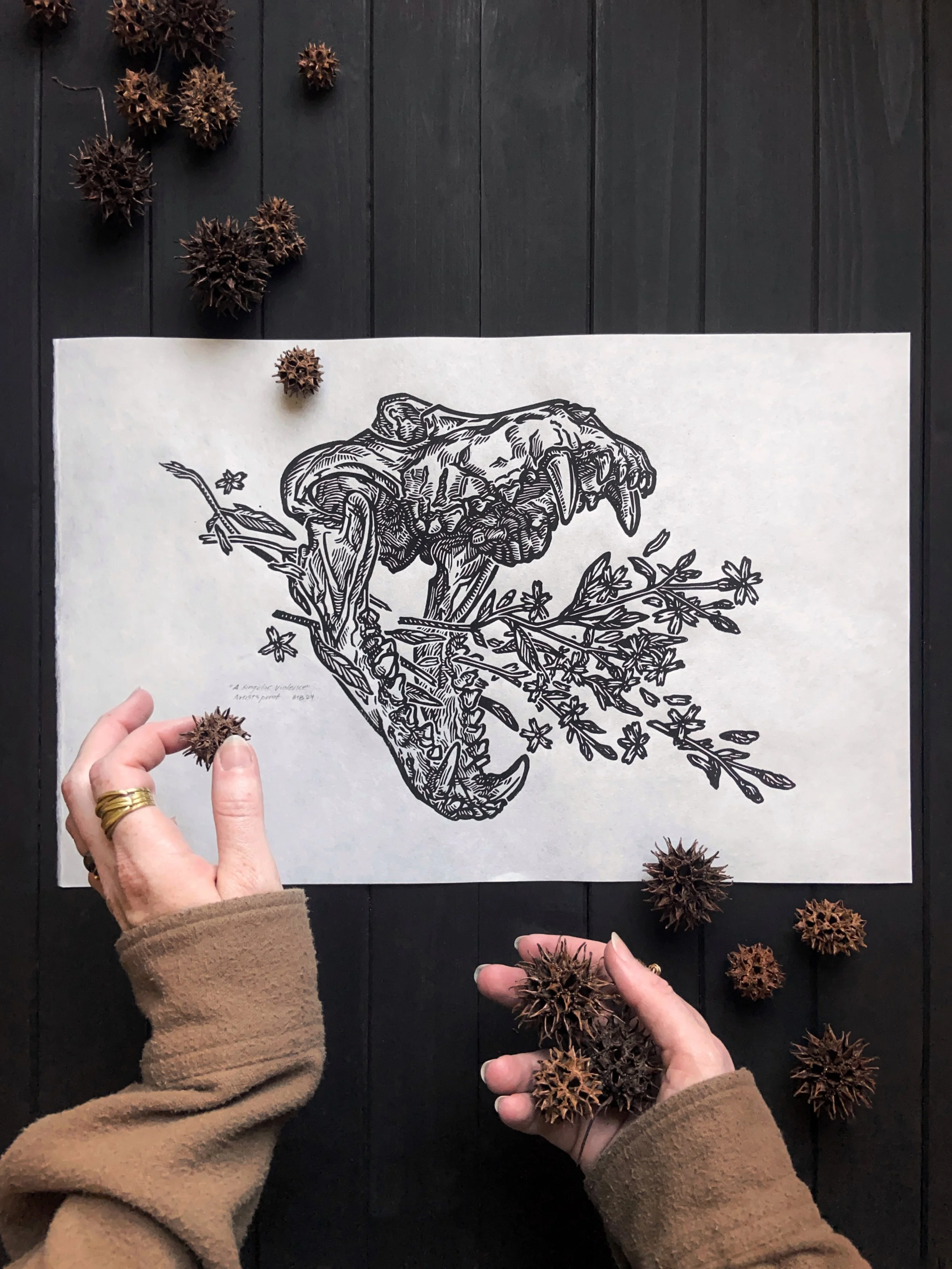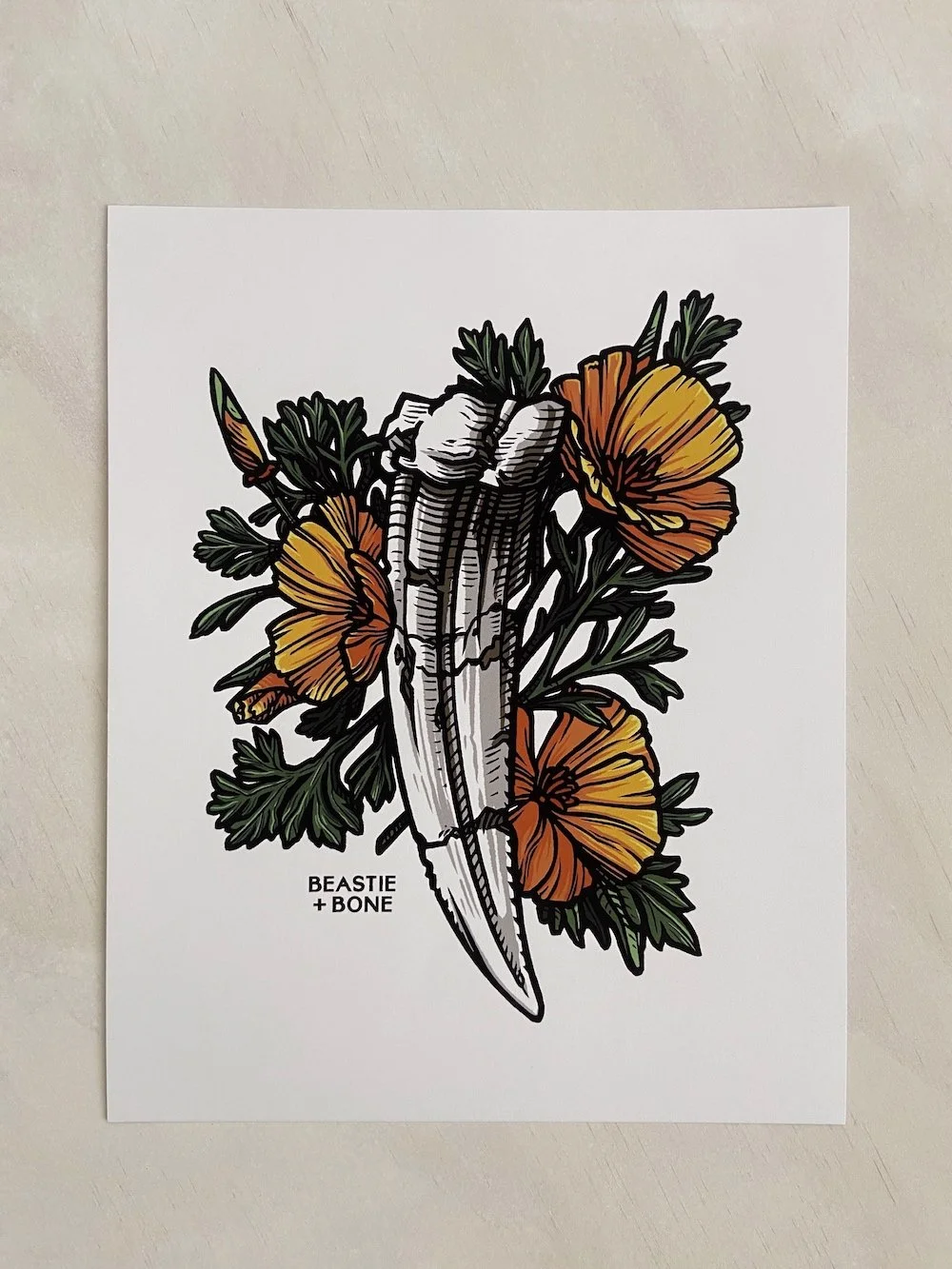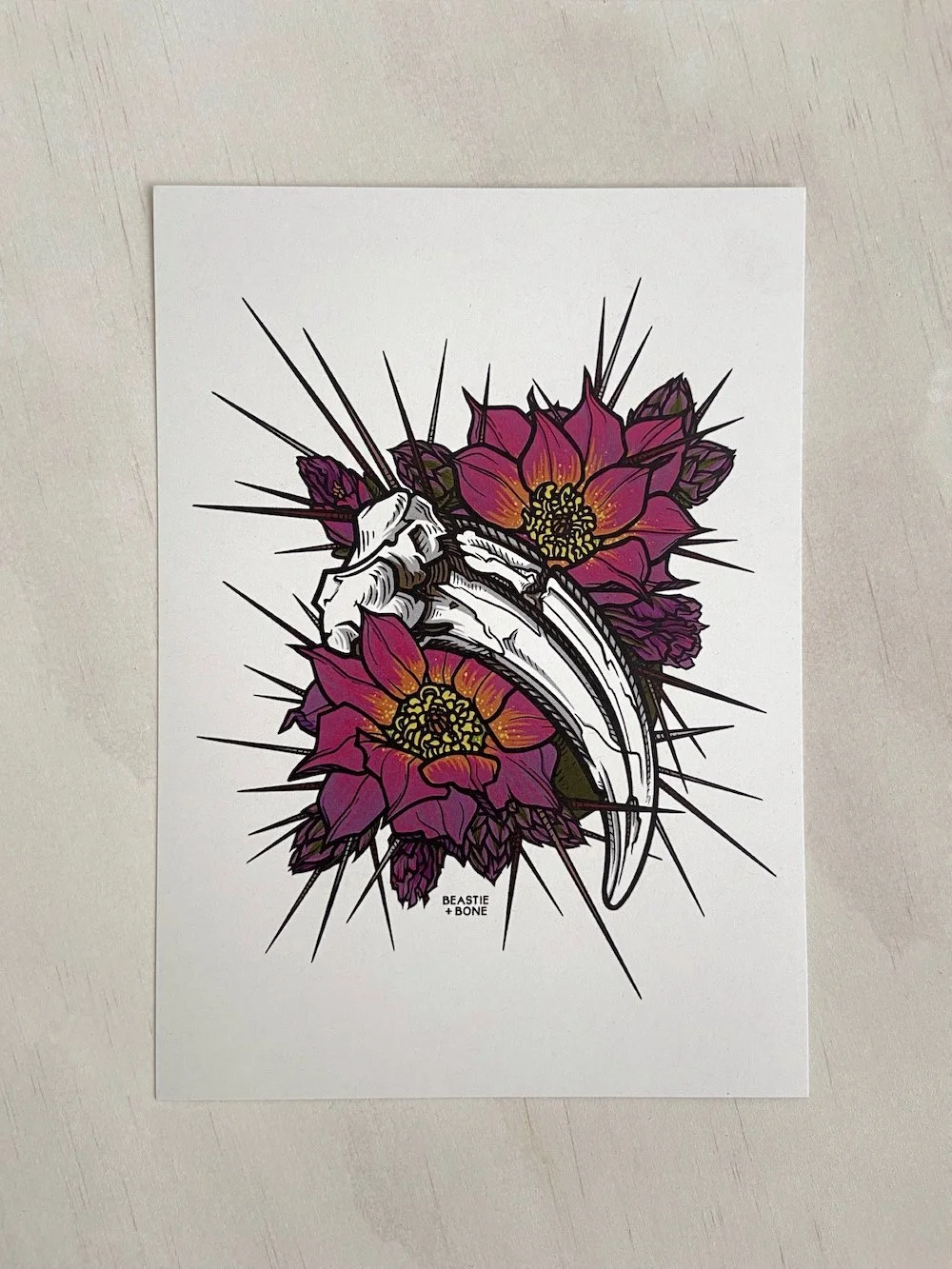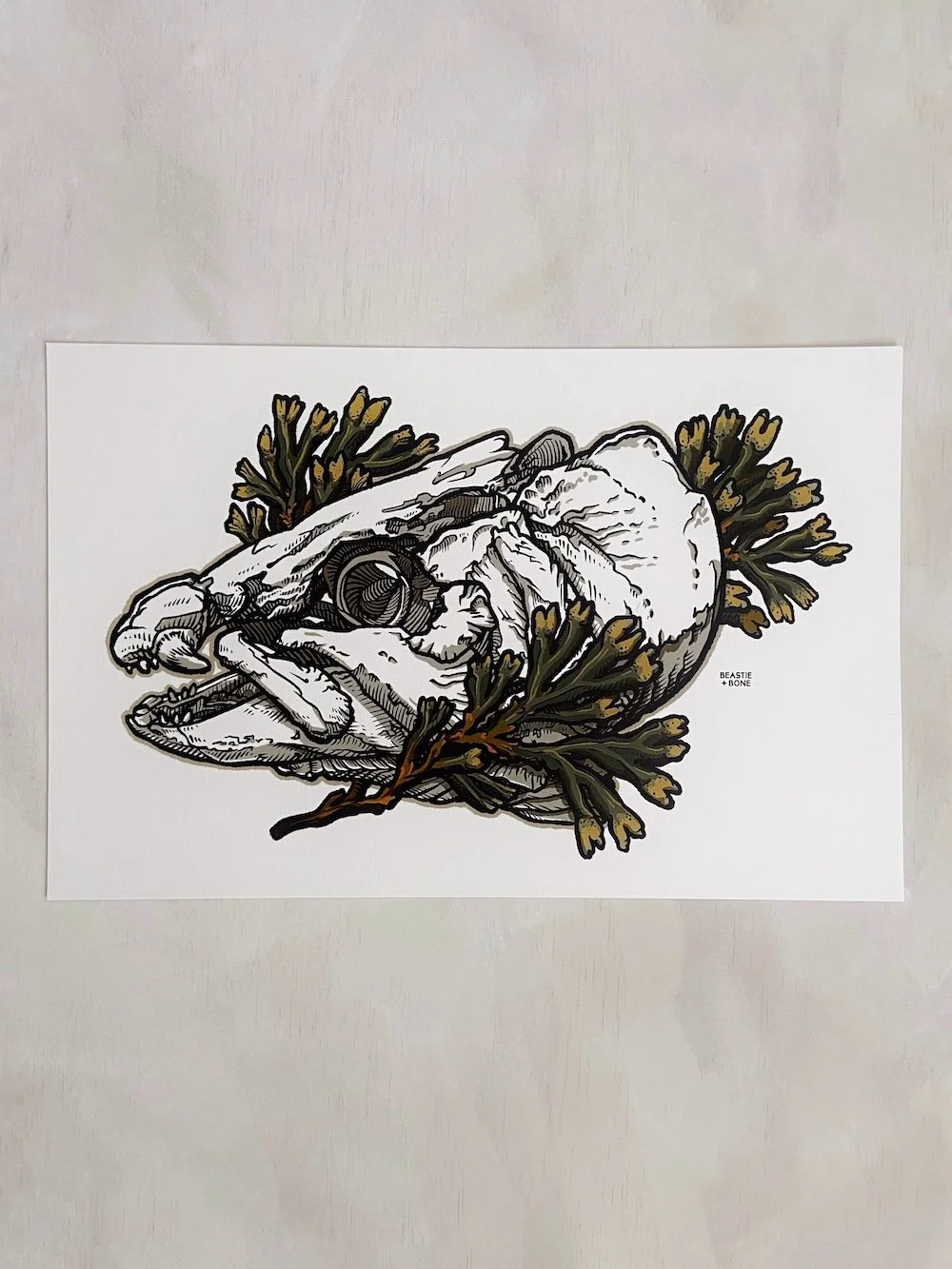 Image 1 of 4
Image 1 of 4

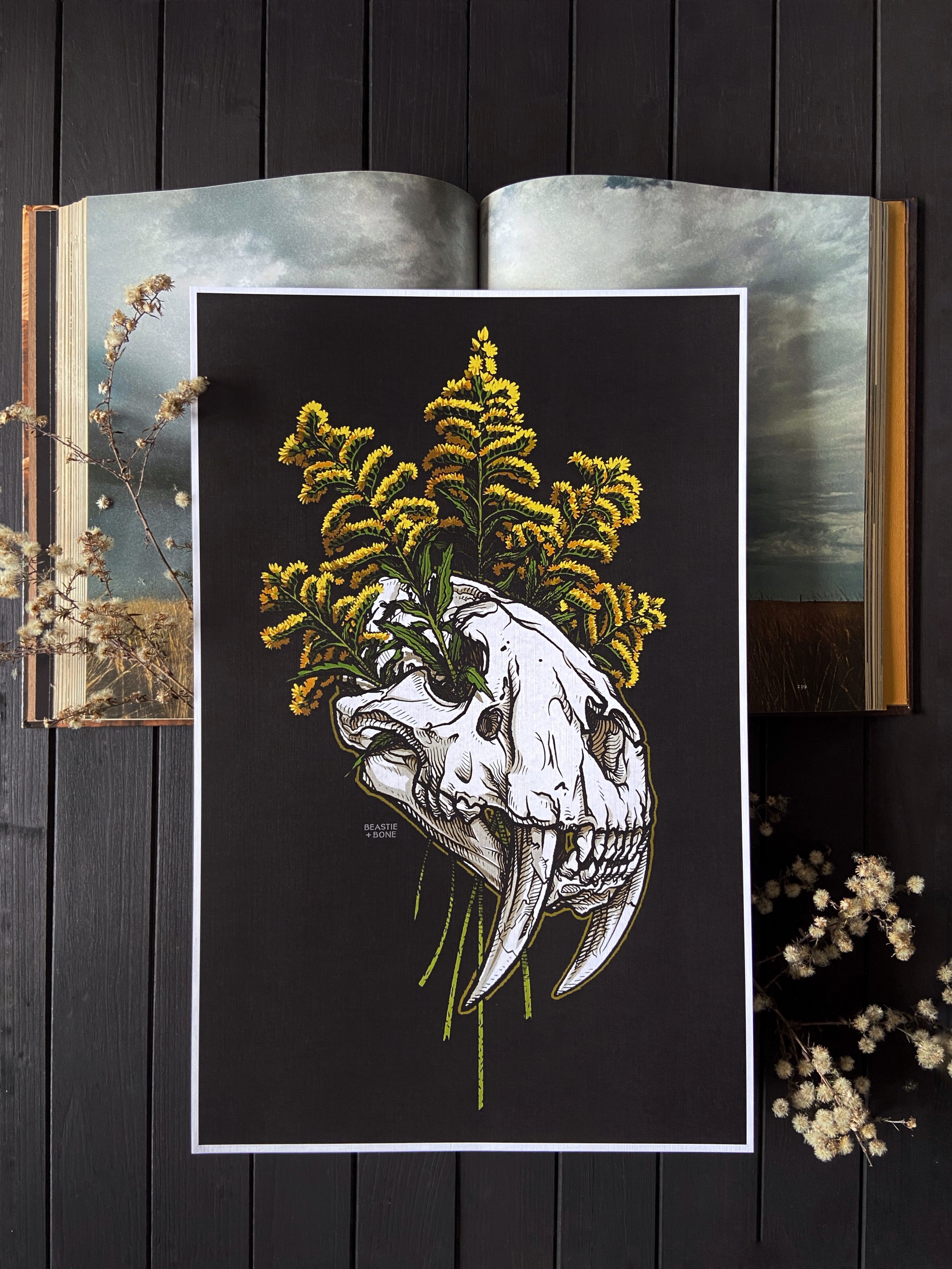 Image 2 of 4
Image 2 of 4

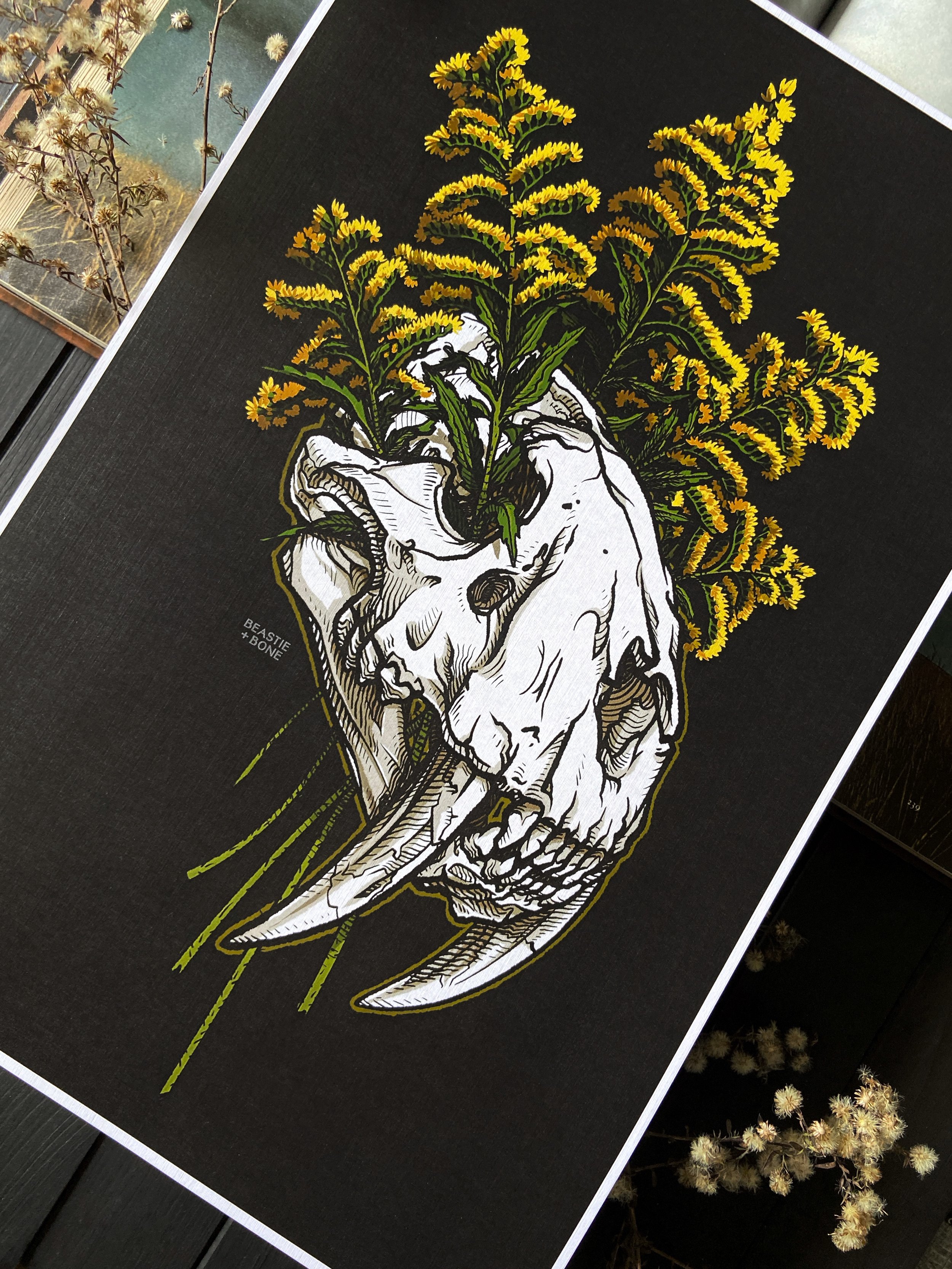 Image 3 of 4
Image 3 of 4

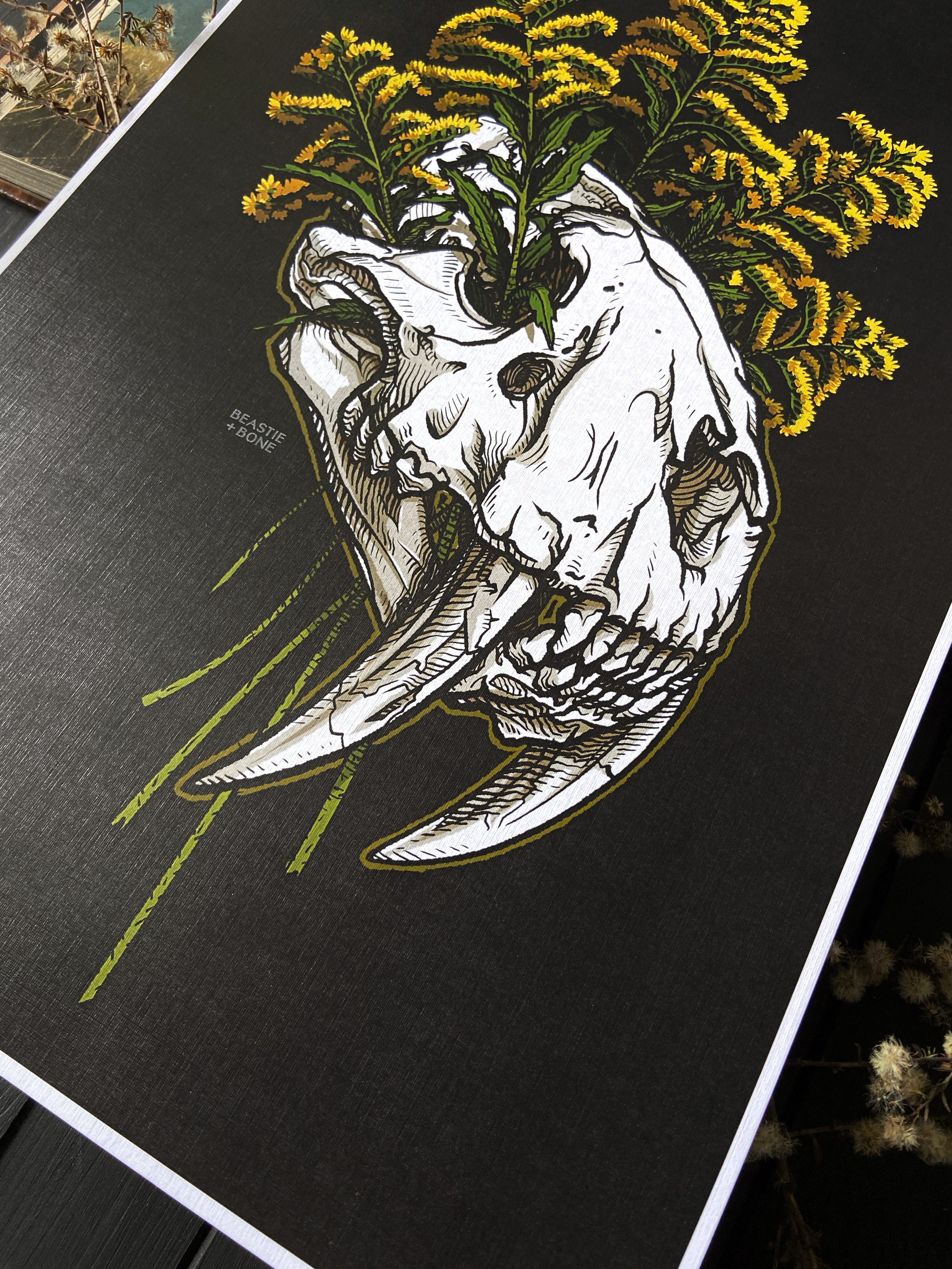 Image 4 of 4
Image 4 of 4





Crowned Saber Fine Art Print
Crowned Saber: North American Megafauna Project, #1
Smilodon fatalis and midwestern goldenrod
11” x 17”
Printed in the US on heavyweight linen-texture, acid free paper that was produced with certified renewable energy.
By combining prehistoric North American species with contemporary local flora, the goal of the North American Megafauna Project by Beastie and Bone is to help inhabitants of the United States view their backyards, local parks, and nearby conservation areas with new appreciation. We no longer have the saber-toothed cat – but we have elk, coyotes, badgers, falcons, and hundreds of other species living among the goldenrod of the Midwestern wilds now. If we don't take care of them and their habitat, they very well may become as alien and distant to us as Smilodon fatalis is now.
Handle gently to avoid damaging this print, and frame using archival materials for longevity of display.
Crowned Saber: North American Megafauna Project, #1
Smilodon fatalis and midwestern goldenrod
11” x 17”
Printed in the US on heavyweight linen-texture, acid free paper that was produced with certified renewable energy.
By combining prehistoric North American species with contemporary local flora, the goal of the North American Megafauna Project by Beastie and Bone is to help inhabitants of the United States view their backyards, local parks, and nearby conservation areas with new appreciation. We no longer have the saber-toothed cat – but we have elk, coyotes, badgers, falcons, and hundreds of other species living among the goldenrod of the Midwestern wilds now. If we don't take care of them and their habitat, they very well may become as alien and distant to us as Smilodon fatalis is now.
Handle gently to avoid damaging this print, and frame using archival materials for longevity of display.
This print is part of Beastie and Bone’s North American Megafauna Project, which is an exploration of ancient extinct species from throughout the North American continent that pairs their remains with common modern day flora of the areas they once lived in. Integrating these past animals back into the landscapes we encounter today in this manner, instead of presenting them as sterile fossil specimens, encourages us to look differently at the shrinking wild spaces around us, and what else may soon no longer be found there unless conservation efforts are supported.




